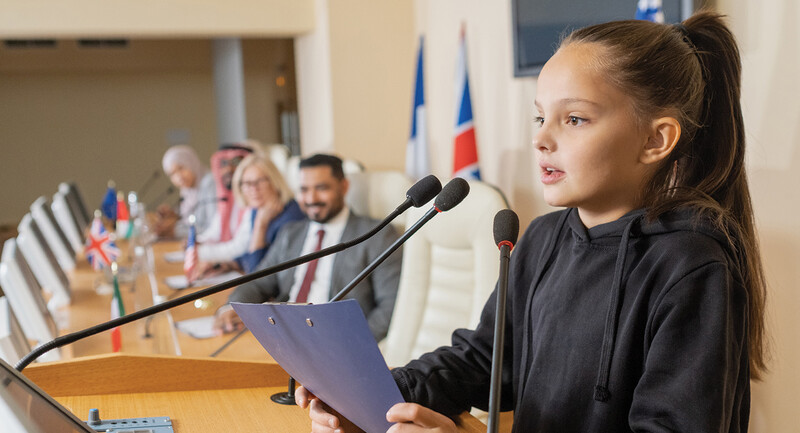Standing back and seeing your students take the lead can feel like a magical moment for any teacher. But what makes these moments possible? Is it truly magic, or intentional design?
For the past several years, we've been exploring this and related questions through research on project-based learning at the University of Pennsylvania Graduate School of Education. A central concept that continues to surface is the idea of authenticity. When students take charge of their learning, teachers often describe it as being connected to an authentic experience. But what does that mean exactly?
Our research has identified four questions that teachers and school leaders can ask themselves when trying to design authentic school projects and experiences.
1. Is this a real problem that real people care about?
No one really cares if Car A or Car B will get to Phoenix first in the word problem on the math worksheet. Authentic problems are those that ask students to explore problems faced by members of real communities. For example, students might be asked to explore the connections between their city's housing policies, race, and who lives in food deserts, or uncover whether recent extreme local weather is likely to be random or part of a larger, predictable trend. Support students to explore problems with real significance for a community beyond the school walls.
2. Do students' roles, processes, and products mirror those of the real world?
Support your students to take on professional and field-specific roles that really exist in communities working on the same problem. Beyond the team-management roles such as "time-keeper" and "note-taker," have students serve in professional and field-specific roles as well. For example, a student may take on the role of a lobbyist when they engage in policy research or a statistician when they try to make an argument about cause and effect. Similarly, make sure the processes are authentic—instead of asking students to write a position essay, ask them to write a policy proposal. Finally, ensure the products they produce are also authentic—instead of a final test, support students to design and implement a scientific investigation to explore water quality before and after large storms and produce a formal scientific report that outlines their findings. In each case, these roles, processes, and products mirror or approximate those of communities working on similar problems outside of a school.
3. Who is the audience and what is the impact?
Establishing a real audience for students' work can quickly transform a simulated or hypothetical experience into a real one. To illustrate, imagine two classrooms, each working on a project on how local city resources are deployed and which members of the community benefit the most. One teacher has students present to the class and herself, while another brings her students to a city council meeting to present their findings. Students will more likely feel the urgency of the question, be more engaged in the process, and appreciate the significance of their work if they can discuss and present it to an audience on whom it might make an impact.
4. How can students make personal connections to the work?
When students can see how their work is connected to their own interests, families, or communities, they experience increased motivation and a deeper understanding of their own connection to their community and world. Whenever possible, teachers should help students make those connections by drawing on students' experiences, interests, perspectives, and ideas, and supporting them to constantly revisit and develop them throughout the project.
Creating an authentic learning experience can feel magical—but it's not about finding the perfect spell. Rather, it requires attention and care to the specific components of the experience and how they come together. Then, you can see the power of authenticity.









